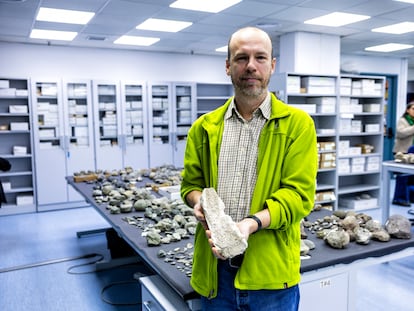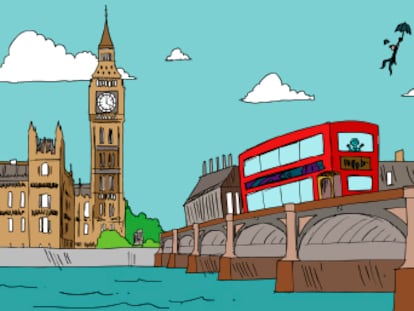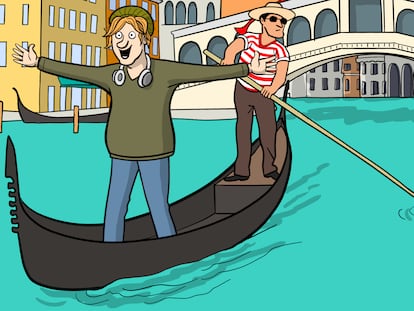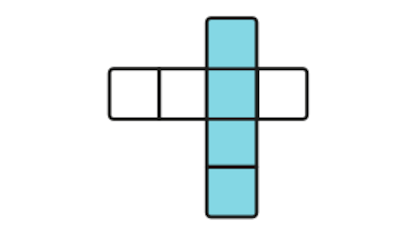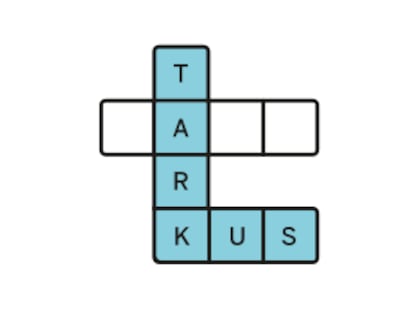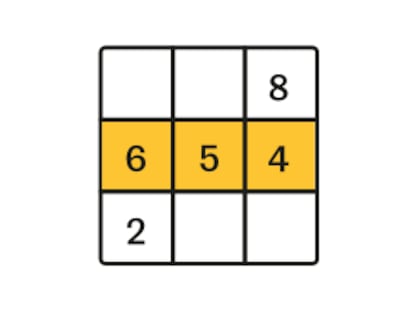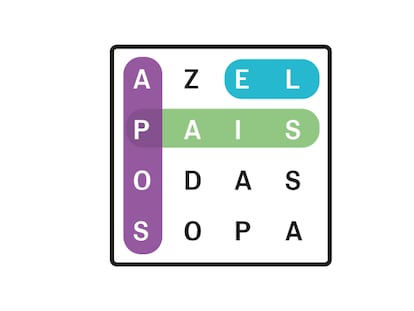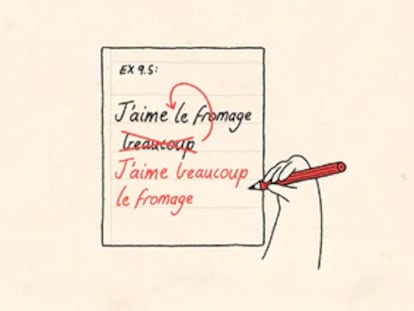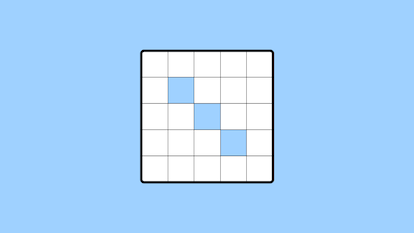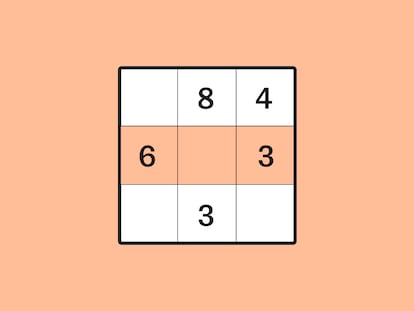Two mummies reveal a human lineage lived in isolation in the Green Sahara 7,000 years ago
DNA explains the enigma of the culture that painted swimmers and hippos in the middle of the desert thousands of years ago
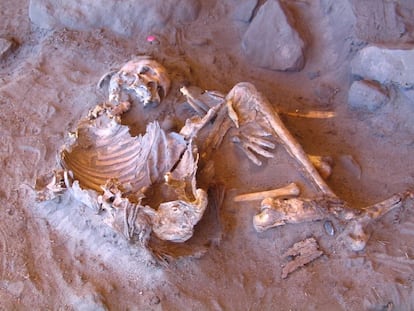
Almost 100 years ago, Hungarian explorer Lászlo Almásy was crossing the Sahara Desert when he came across something inexplicable in a cave. On the rock walls, he saw human figures painted thousands of years earlier that seemed to be swimming peacefully in the middle of the desert. Some thought they represented corpses, even souls floating in the waters of Nun, the primordial ocean of Egyptian culture. Almásy suggested that they were in fact simply people swimming, because the Sahara wasn’t always a desert.
Now, the corpses of two adult women who died some 7,000 years ago in what is now southern Libya have provided the first known genetic data on the mysterious inhabitants of the so-called Green Sahara. The two corpses were naturally mummified thanks to the aridity and high temperatures in the region, which allowed DNA to be extracted from their tooth roots and some of their bones. The results, published on Wednesday in Nature, show that these people belonged to a previously unknown branch of the human family that survived in isolation for thousands of years thanks to a radical transformation of the landscape.
Fourteen thousand years ago, the Ice Age ended, and monsoon rains turned all of Africa green. The desert transformed into a savanna covered with grasses, trees, lakes, and rivers inhabited by giraffes, hippopotamuses, and other animals, as well as groups of humans who survived by hunting and gathering. This is the landscape depicted in the famous rock paintings in the Tadrart Acacus Mountains of Libya, which are up to 12,000 years old. In this same area is Takarkori, a rock shelter where 15 bodies have been found, including those of the two women analyzed, along with baskets woven from riparian grasses, characteristic of wetlands.

The authors of the research compared the genomes of these two women with those of nearly 800 present-day humans and 117 Africans from different periods in the past. The results show that they are not related to sub-Saharan African populations. The closest match is that of humans who lived about 15,000 years ago in Taforalt, Morocco.
One of the greatest mysteries of this period is how these people adopted pastoralism and learned to live off the milk, meat, and blood of their animals. One hypothesis is that the Green Sahara served as a corridor for human migrations returning to Africa from Asia and Europe, finding suitable pastures to expand their way of life.
But the DNA of the Takarkori women shows that these populations remained isolated from the south and the north. The origin of their lineage dates back 50,000 years, when their group separated from modern humans who left Africa at that time, from whom all people outside that continent descend.
The Takarkori people had 10 times less Neanderthal DNA than modern humans outside of Africa, but more than those from sub-Saharan Africa. This suggests that they originated from North African populations who already carried some Neanderthal genetics and who settled in the Green Sahara during the so-called African Humid Period.
“Our research challenges some theories about the history of human populations in North Africa and reveals the existence of this lineage with very ancient roots that remained isolated from the rest,” said study co-author Nada Salem, a researcher at the Max Planck Institute for Evolutionary Anthropology, in a press release. “Furthermore, we show that pastoralism spread throughout the Green Sahara likely through cultural exchange, rather than through migration.”
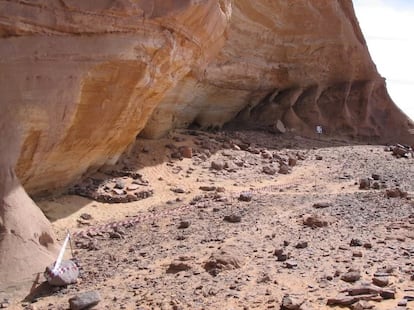
About 5,000 years ago, the shift in the Earth’s rotational axis and the withdrawal of monsoon rains turned the Sahara back into a desert. This caused an exodus of pastoralist peoples to other parts of Africa and may have been the origin of Egyptian civilization. The Takarkori lineage, such as it was, became extinct forever. But some of its DNA is still present in North African populations.
“It’s a fascinating discovery,” says Carles Lalueza-Fox, a geneticist at the Spanish National Research Council (CSIC). “Until now, the inhabitants of the Green Sahara were merely paintings in some caves, such as the famous Cave of the Swimmers, which appeared in the film The English Patient [inspired by Almásy’s life],” he emphasizes. “These genetic data give a more realistic view of what these people were like, who lived in an ecosystem that no longer exists, and they uncover a previously unknown lineage that appears to have separated from other African ancestry for almost 50,000 years. It’s also interesting that in the work we published on 8,000-year-old individuals from Shum Laka, Cameroon, we detected a ‘ghost’ lineage that we placed in the Sahel, but these individuals don’t seem to represent it. This only indicates how little we know about ancient African populations.”
Mary Prendergast, an anthropologist at Rice University in the United States, warns that the study has a limitation as it relies only on the DNA of two individuals to shed light on a history that spans thousands of years. Even so, the work “makes a crucial contribution,” she believes. “Current research is only just beginning to unravel the complex history of African populations and is discovering new lineages that have left virtually imperceptible marks on the genome of present-day populations,” she writes in a commentary on the study. “In this context, even two individuals can change our conception of the past.”
Sign up for our weekly newsletter to get more English-language news coverage from EL PAÍS USA Edition
Tu suscripción se está usando en otro dispositivo
¿Quieres añadir otro usuario a tu suscripción?
Si continúas leyendo en este dispositivo, no se podrá leer en el otro.
FlechaTu suscripción se está usando en otro dispositivo y solo puedes acceder a EL PAÍS desde un dispositivo a la vez.
Si quieres compartir tu cuenta, cambia tu suscripción a la modalidad Premium, así podrás añadir otro usuario. Cada uno accederá con su propia cuenta de email, lo que os permitirá personalizar vuestra experiencia en EL PAÍS.
¿Tienes una suscripción de empresa? Accede aquí para contratar más cuentas.
En el caso de no saber quién está usando tu cuenta, te recomendamos cambiar tu contraseña aquí.
Si decides continuar compartiendo tu cuenta, este mensaje se mostrará en tu dispositivo y en el de la otra persona que está usando tu cuenta de forma indefinida, afectando a tu experiencia de lectura. Puedes consultar aquí los términos y condiciones de la suscripción digital.
More information
Archived In
Últimas noticias
Most viewed
- Reinhard Genzel, Nobel laureate in physics: ‘One-minute videos will never give you the truth’
- Oona Chaplin: ‘I told James Cameron that I was living in a treehouse and starting a permaculture project with a friend’
- Pablo Escobar’s hippos: A serious environmental problem, 40 years on
- Why we lost the habit of sleeping in two segments and how that changed our sense of time
- Charles Dubouloz, mountaineering star, retires at 36 with a farewell tour inspired by Walter Bonatti

